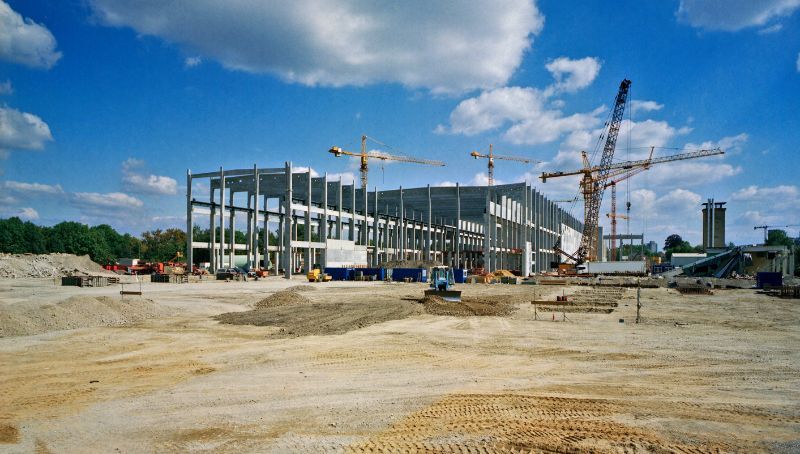Construction is a diverse and complex industry that encompasses the planning, design, and execution of building projects. It plays a crucial role in shaping our built environment and contributes significantly to the global economy. In this article, we will explore the concept of construction, examine the different types of construction projects, and discuss essential topics that impact the industry today.
Defining Construction
Construction refers to the process of creating, modifying, or repairing built structures, including buildings, infrastructure, and industrial facilities. It involves a wide range of activities, such as site preparation, excavation, foundation work, framing, and finishing. In addition, the construction process typically includes various stages, including planning, design, procurement, execution, and maintenance.
Types of Construction Projects
There are several different types of construction projects, which can be broadly classified into four main categories:
a. Residential Construction: This category includes the construction of private homes, apartments, condominiums, and other residential dwellings. Residential construction projects can range from single-family homes to large-scale housing developments.
b. Commercial Construction: Commercial construction involves the creation of non-residential buildings, such as offices, retail spaces, hotels, and other commercial facilities. These projects often require specialized design and construction expertise to meet the unique needs of businesses and their customers.
c. Industrial Construction: Industrial construction encompasses the development of manufacturing plants, warehouses, distribution centers, and other facilities designed for industrial operations. These projects often involve complex systems and processes, necessitating specialized knowledge and skills.
d. Infrastructure Construction: Infrastructure construction includes developing public works projects, such as roads, bridges, airports, rail systems, and utilities. These projects are critical for supporting the transportation, communication, and essential services society relies on daily.
Construction Methods and Techniques
The construction industry employs various methods and techniques which can significantly impact a project’s cost, duration, and quality. Some of the most common construction methods include:
a. Traditional Construction: Traditional construction, also known as “stick-built” or “brick and mortar” construction, involves the on-site assembly of building materials, such as wood, steel, and concrete. This method is widely used due to its versatility and adaptability.
b. Prefabrication: Prefabrication involves the off-site manufacturing of building components, which are then transported to the construction site for assembly. This method can reduce waste, improve quality control, and accelerate project timelines.
c. Modular Construction: Modular construction is a type of prefabrication that involves the production of complete, self-contained building modules. These modules are assembled on-site to create the final structure, offering a faster and more efficient construction process.
Sustainability in Construction
Sustainable construction practices aim to minimize the environmental impact of building projects while maximizing their social and economic benefits. These practices include:
a. Energy Efficiency: Utilizing energy-efficient building materials and systems can reduce energy consumption, lower operating costs, and decrease greenhouse gas emissions.
b. Resource Conservation: Employing sustainable materials, waste reduction strategies and efficient construction methods can help conserve natural resources and reduce the environmental footprint of construction projects.
c. Healthy Indoor Environments: Prioritizing indoor air quality, natural lighting, and acoustics can improve occupant well-being and productivity.
Construction Industry Challenges and Trends
The construction industry faces several challenges, such as labor shortages, increasing material costs, and the need for improved productivity. Some emerging trends that are shaping the industry’s future include:
a. Digital Transformation: The adoption of digital technologies, such as Building Information Modeling (BIM), drones, and artificial intelligence, is revolutionizing construction processes and improving efficiency.
b. Collaboration and Integrated Project Delivery (IPD): Greater collaboration among stakeholders and the use of Integrated Project Delivery (IPD) can streamline decision-making, enhance communication, and result in better project outcomes.
c. Workforce Development: Addressing labor shortages and skills gaps through training, education, and mentorship programs can help attract and retain talent in the construction industry.
d. Resilient Design: Designing and constructing buildings and infrastructure to withstand natural disasters, climate change, and other threats is becoming increasingly important for long-term durability and safety.
Conclusion
Construction is a multifaceted industry that plays a vital role in shaping our built environment. With various types of construction projects and a diverse range of methods and techniques, the industry continues to evolve to meet the changing needs of society. By embracing sustainable practices, innovative technologies, and collaborative approaches, the construction industry can overcome current challenges and create a more resilient, efficient, and eco-friendly future for all.









